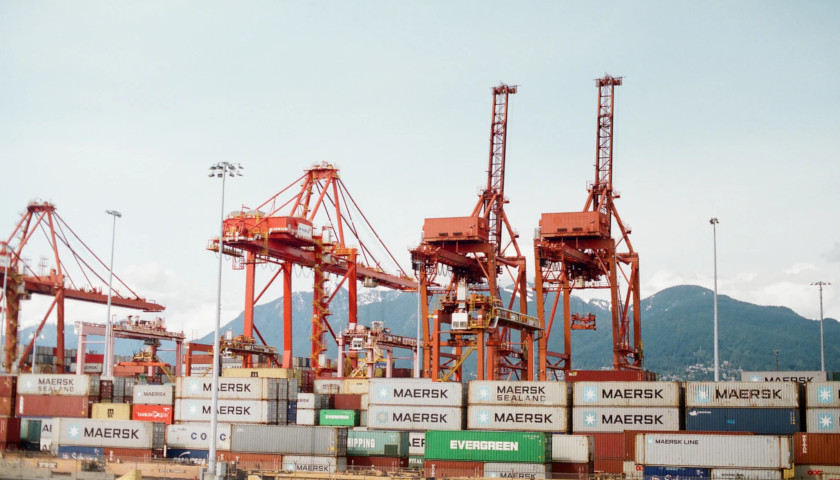by Spencer P. Morrison
J.P. Morgan estimates that President Trump’s tariffs will cost American families up to $1,000 next year. We have heard this before and we’ll hear it again. But the fact is that tariffs have not yet—nor will they likely—increase the cost of living.
Further, the myopic obsession with the price of goods ignores the more pressing problem: millions of Americans remain chronically unemployed, and millions more have been reduced to surviving on part-time McJobs and welfare. Turns out, cheap goods aren’t so cheap if you don’t have a job.
Crying Wolf
Every time President Trump threatens to impose more tariffs on China liberals lose their marbles. Tariffs will make Americans poor! Tariffs will turn America into a fascist dictatorship! Tariffs will—dare I say it—ruin Christmas!
Time and again, reality proves the doomsayers wrong. Tariffs have not increased the cost of living in America. This is obvious to anyone who paid attention back in 2018, when Trump imposed effective tariff rates of 40 percent on imported washing machines. What happened?
Nothing.
I’ve mentioned this before, but it’s worth repeating. According to the Consumer Price Index (CPI) the cost of laundry equipment increased by 6.8 percent in 2018. The inflation rate was 2.44 percent. In 2019, the cost of laundry equipment decreased by 0.48 percent, compared to an expected inflation rate of 2 percent. Yes, washing machines prices rose slightly faster than inflation—but nowhere near 40 percent.
In any event, we don’t even know if tariffs caused the increase. Prices in 2012 rose by 8.56 percent. And guess what? There were no tariffs to blame. The 2018 price change may just be a random walk. Children find faces in clouds: economists find meaning in randomness.
The reason tariffs barely affect consumer prices is that they aren’t levied on retail prices. They are levied on the first sale price—the price paid to foreign vendors by American companies or their agents. As such, tariffs are applied on a very small base rate, which harms foreign producers without really affecting American consumers.
And of course, tariffs can be completely avoided by simply buying American-made products.
I will not go into too much detail on this point as I have written about it ad nauseam. Suffice it to say that the Washington Post does not appear to have the faintest understanding of how tariffs actually work—they really do seem to think tariffs are just sales taxes.
Lastly, global free trade is underpinned by the theory of comparative advantage. The problem for free traders—of which they are blissfully unaware—is that comparative advantage is domain-specific, meaning that it only applies when certain preconditions are satisfied.
One of these preconditions is that capital is immobile, i.e. industries cannot simply pick up and move from country to country. Obviously, capital is mobile—American factories move to China all the time. As such, comparative advantage does not apply and free trade lacks any sort of theoretical justification.
The only reason the Washington Post or Conservatism, Inc. support free trade is because they are ignorant, or on the payroll of the international banks who are profiteering America’s dispossession.
Upstairs, Downstairs
The free-trade brigade focuses exclusively on the effect of tariffs on consumption. In doing so, they miss the forest for the trees.
In reality, every consumer is also a producer, and therefore what harms producers—for example, moving millions of jobs to China—necessarily harms consumers down the road. In fact, production always precedes consumption for the simple fact that you cannot consume what you have not produced. You cannot spend what you do not earn.
You cannot reap what you do not sow.
The truth of this logic is readily apparent when you look at the actual data. Take, for example, NAFTA. In 1993, President Bill Clinton promised that the North American Free Trade Agreement would create “a million [American] jobs in the first five years.” How?
NAFTA would eliminate America’s tariff wall with Mexico so that both nations could trade freely. This would allow them to maximize their respective comparative advantages and produce more material wealth. Win-win. Right?
Wrong.
Multinational corporations relocated their factories en masse to Mexico—the prospect of saving billions by hiring low-cost Mexican labor was just too good to pass up. Conversely, very few industries moved from Mexico to America. In total, a net 840,000 American manufacturing jobs have been displaced by NAFTA and the resultant trade deficit.
On top of this, America lost all of the service jobs that depended upon those factories. This is because manufacturing is an anchor industry: factories, like mines or oilfields, generate new exportable wealth and in doing so support predicate industries.
Predicates, like restaurants or banks, are important because they diversify the economy and make it more efficient, however, they are not self-sustaining. This is why hairdressers and lawyers move to mining towns, but not vice versa.
The Bureau of Economic Analysis estimates that each dollar of manufacturing output supports roughly $1.48 in spinoff service output—this is called a multiplier effect. When the lost predicate jobs are accounted for it becomes clear that NAFTA cost America a net 2.1 million jobs.
The problem of offshoring is not unique to NAFTA. Market asymmetries have caused many millions of American jobs to move abroad. China is the biggest culprit and is responsible for the bulk of the 8 million American manufacturing jobs which have been lost—never mind the millions of predicate jobs.
We often forget about the other sectors which are vulnerable to offshoring, however. For example, over 1 million people in the Philippines work in call centers—most of whom service American clients. Likewise, hundreds of thousands of coding jobs have been offshored to India.
The list goes on and on.
To make matters worse, these millions of jobless Americans saturated the labor market. Some found new jobs, although they didn’t pay as well as the lost jobs. A study from Princeton University found that the average wage cut for displaced manufacturing workers was 17.5 percent—waiting tables does not pay as much as building cars!
Without tariffs to level the playing field between America and the Third World, multinational corporations will continue to move their factories, call centers, and laboratories abroad. At this point, very few industries are safe from the ravages of globalization.
America will hemorrhage jobs. Small towns will decay. And the middle class will die.
Tartini’s Trill
Some claim that offshoring has actually improved America’s economy because it has actually bolstered consumption—the benefit of cheap goods outweighs the harms caused by job loss.
The argument is devious but wrong. The only reason that America has been able to offshore production without simultaneously decreasing its consumption is that we have thus far been able to buoy our consumption by raffling off our assets and debt to Third World buyers.
For example, American sells $150 billion in real estate to foreigners every single year. Likewise, foreigners have bought up roughly 38 percent of all American corporate shares and 44 percent of our national public debt. In exchange, we got Halloween masks and saved a few bucks on our iPhones. We sold our souls for foreign luxuries.
Of course, this paradigm is not sustainable—soon we will run out of assets and debt to sell. When that happens, the bubble will burst and we will wish we had not spent our economic summer idly consuming while the Chinese worked hard, storing fat for the winter. Then, we will sing for our supper.
After all, the Devil always claims his prize.
– – –




